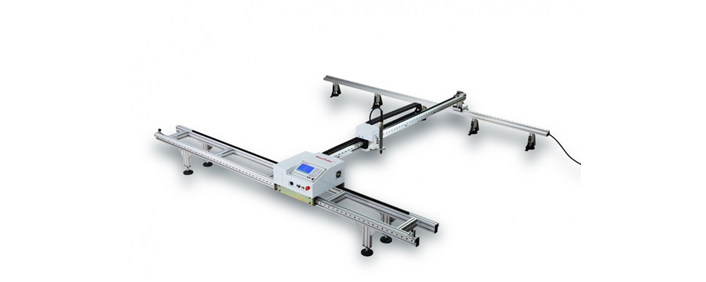Types of CNC Cutting Machines
If you’re looking for a CNC cutting machine that can produce large flat materials, you’ve come to the right place. CNC machines can create tiny houses, kayaks, tree houses, furniture, and more. This article will discuss the different types of CNC cutting machines available, and what they can do for you. If you’re still confused, read on for some helpful information. You’ll also learn about Plasma and Twist drills.
Laser Cutting Through CNC Cutting Machines
Laser cutting on a CNC cutting machine is a popular way to create complex designs. The laser beam melts the material and blows out the excess nitrogen. The cutting head moves along the material with chains or belts. The distance between the metal and nozzle determines the quality of the operation. The speed of the laser beam and its intensity also affect the output quality. The laser beam should be accurate and positioned correctly for accurate results.
Two types of laser cutting are available. Rastering and vector cutting use different types of technology. The first type of laser cutting burns off the top layer of material. The second type uses grayscale or two-color images. Rastering lasers are generally set at lower powers than vector cutting machines, resulting in fine dots. The DPI (dots per inch) is related to the resolution of the image.
Plasma Cutting with CNC Cutting Machine
A CNC cutting machine with plasma capabilities can cut various metals, including copper, steel, and aluminum. The plasma-cutting torch ignites the arc, which sends high-speed ions down the workpiece. The plasma then blows away the hot molten metal and compressed gas. The workpiece is separated by the resulting sharp edges. The process is repeated as necessary, but you may notice a few distinct differences.
CNC cutting machines that feature plasma technology are specialized for industrial fabrication. This process is relatively affordable and easy to store when not in use. The open cantilever table design allows you to quickly set up your machine for cutting, which eliminates the need for complicated setups. Plasma cutting machines are also easy to operate – all you need to do is adjust the torch height and start the program. CrossFire plasma cutting is the fastest industrial metal cutting process, with speeds of 300 inches per minute.
CNC Cutting Machine Twist Drills
CNC cutting machine twist drills are used in a variety of cutting processes. They are used to make precise holes in various materials. They can be classified into two types, taper and straight shank. Taper drills have a shorter shank and can process materials such as aluminum and steel. Both types of twist drills are similar in operation, though they have some differences. In general, they work by rotating the drill bit at high speeds under a spindle drive. The workpiece is fed continuously downwards as the drill bit is being rotated. As the drill bit rotates, it produces a spiral groove that collects chips and removes them from the workpiece.
Three and four-fluted drills are similar to standard twist drills, but they lack the chisel edge. They are generally used to enlarge holes and offer better productivity, accuracy, and surface finish. The combination drill and countersink are also useful, as they can make center holes. Unlike a standard twist drill, a countersink starts some distance back from the body, making it easier to center the hole.
Fly Cutters for CNC Cutting Machines
Fly cutters are used to cut non-ferrous materials like cast iron and steel. They create less heat during the cutting process, which is why they are ideal for machining non-ferrous materials. However, they can also be used for machining steel and cast iron, and offer a superior finish. Compared to other types of cutters, fly cutters have an easy to use, simple construction. Compared to standard centre clamping carbide inserts, fly cutters generate less heat and are more effective for heavy material removal.

When buying fly cutters for CNC cutting machines, consider the size and geometry of your rotary tool. A fly cutter should have a large diameter rotor. This will allow it to operate at higher feeds and remove more metal quickly. However, a larger diameter rotor will make it harder to set the cutting depth accurately. You should aim to get a cutter with a diameter of 22mm or more.
Computer Numerical Control Cutting Machine
A CNC cutting machine has two basic types of programming: absolute and incremental. Absolute programming specifies the end points of the cutting tool’s movement from a specific starting position, while incremental programming specifies the start position and distance to the target position. Both of these methods are adequate for simple numerical control applications. In addition, both of these methods have several advantages. Here’s how to use them. And keep reading to learn more about each!
The CNC program is composed of a series of instructions to control various aspects of the cutting process, including spindle speed, feed rate, and part geometry. These instructions are written in a computer-readable medium, which the CNC machine’s controller interprets and executes to produce the desired end product. Once the CNC machine is setup and ready to begin cutting, a CNC operator will enter a program to control the machine.
- How Lathe Machine Manufacturers are Powering the Nation’s Engineering Growth in Canada?
- How Chamfer Machines Are Streamlining Metalwork in the UK’s Manufacturing Sector?
- How Feed Rate Adjustments Improve Surface Finish in Vertical CNC Milling Machines?
- How Radial Drilling Machines Achieve Low Vibration and Distortion Resistance?
- From Design to Execution: How CNC Press Brakes Ensure Seamless Workflow
- How to Optimize Sheet Metal Operations Using a Hydraulic Press Brake?


